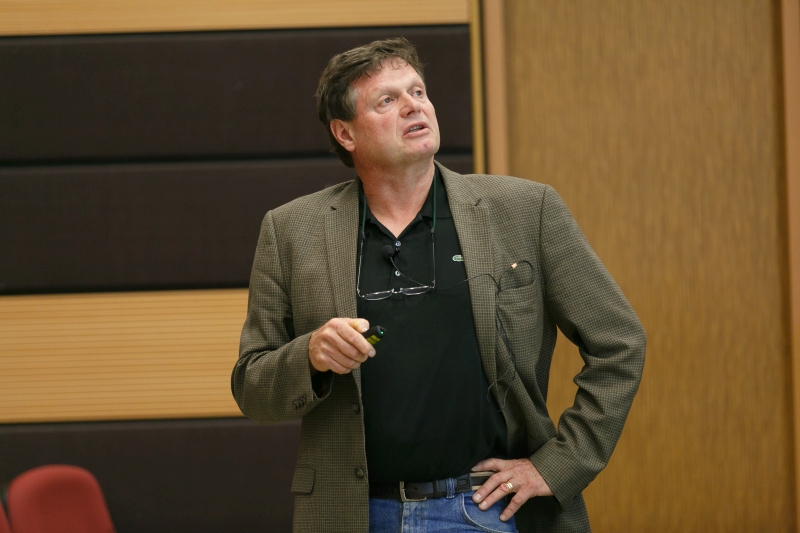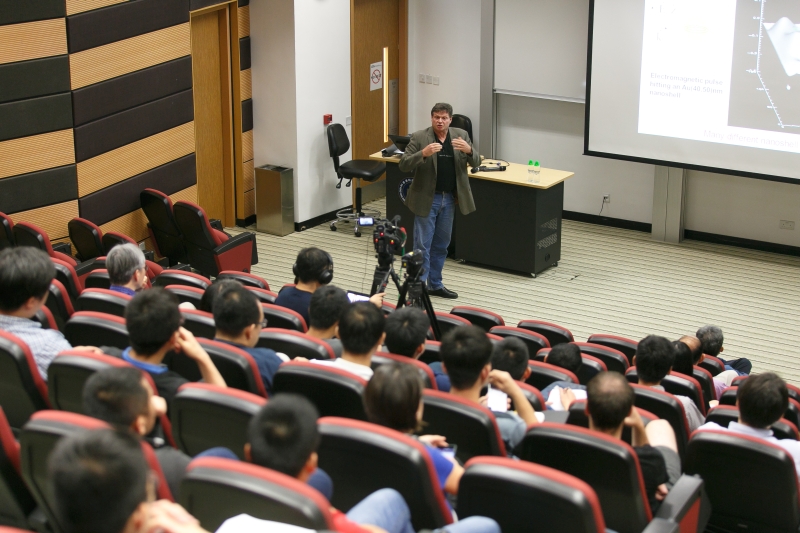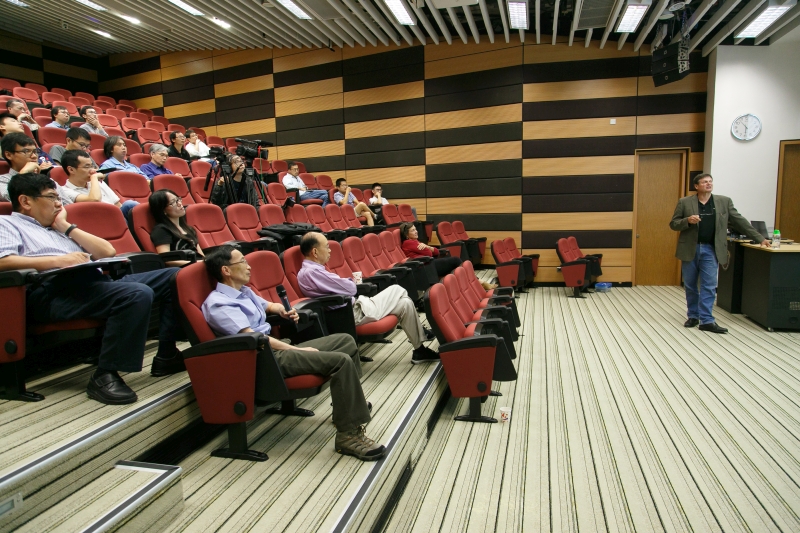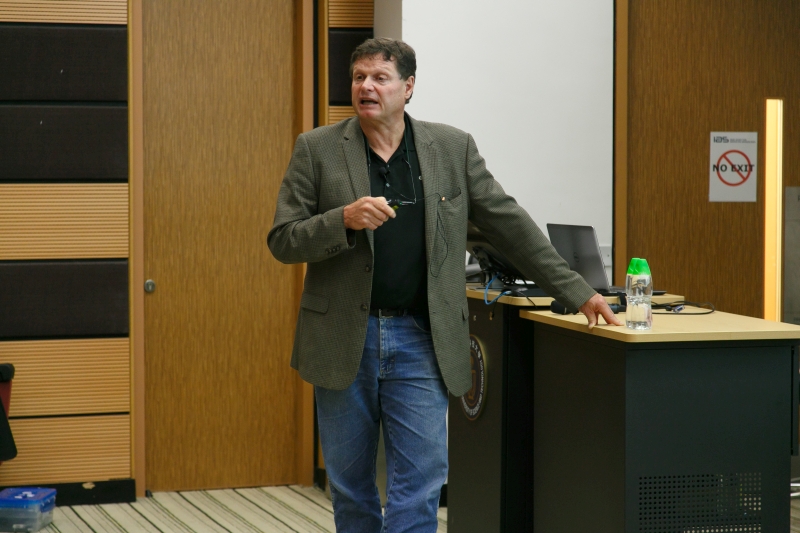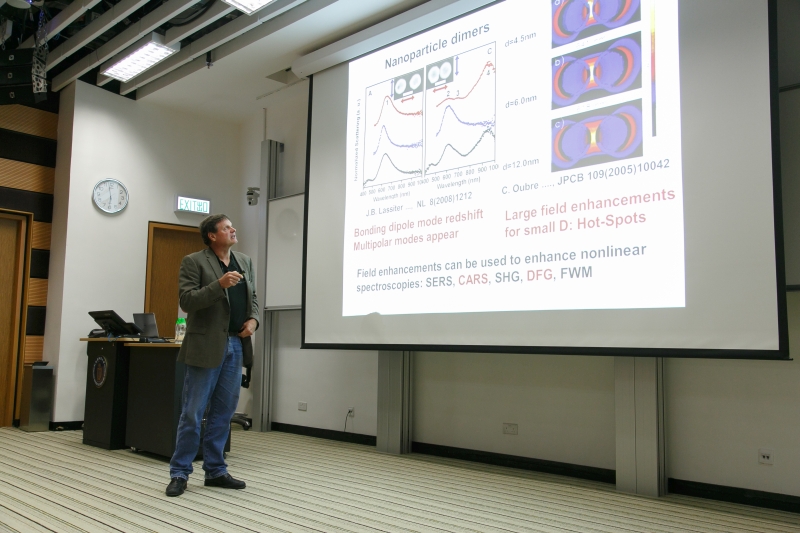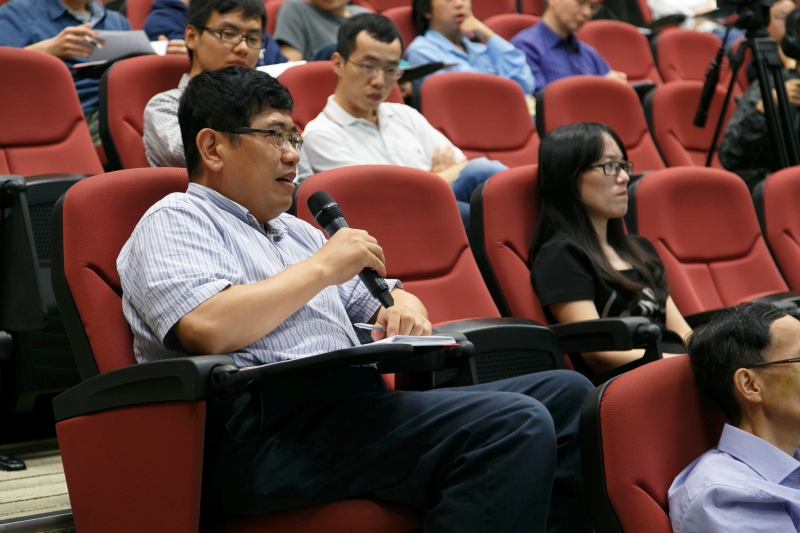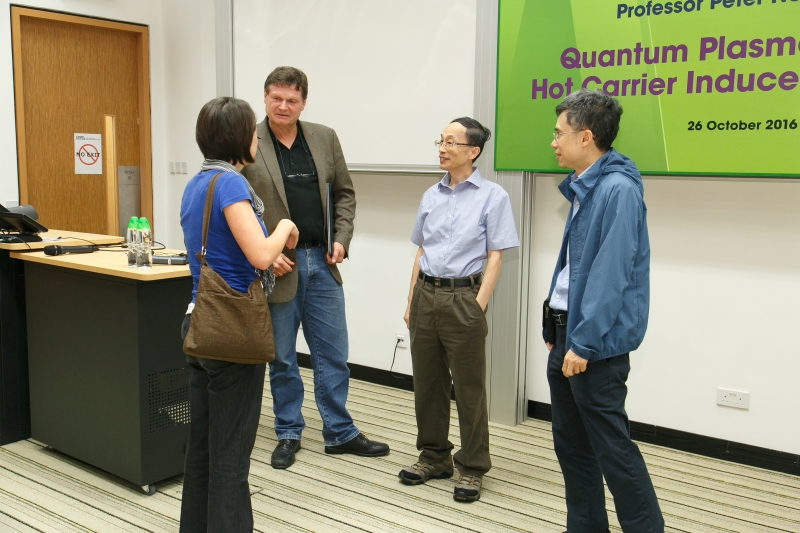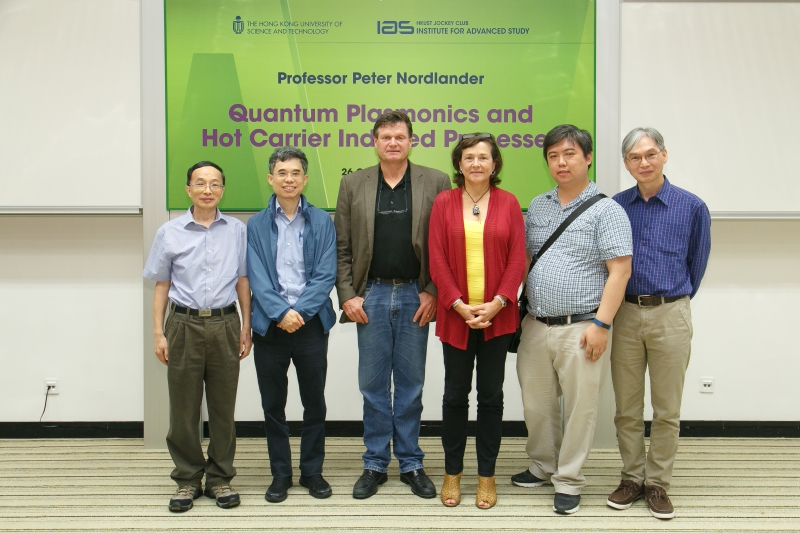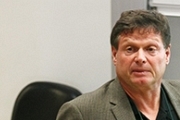Quantum Plasmonics and Hot Carrier Induced Processes
Abstract
Plasmon resonances with their dramatically enhanced cross sections for light harvesting have found numerous applications in a variety of applications such as single particle spectroscopies, chemical and biosensing, subwavelength waveguiding and optical devices. Recently it has been demonstrated that quantum mechanical effects can have a pronounced influence on the physical properties of plasmons. Examples of such effects is the charge transfer plasmon enabled by conductive coupling (tunneling) between two nearby nanoparticles and nonlocal screening of the plasmonic response of small nanoparticles. One relatively recent discovery is that plasmons can serve as efficient generators of hot electrons and holes that can be harvested in applications. In this lecture, the speaker will discuss external control of charge transfer plasmons for active plasmonic devices, hot carrier generation, decay and fluorescence, and hot carrier induced processes and applications such as photodetection, phase changing of nearby media, and photocatalysis.
About the speaker
Prof. Peter Nordlander obtained his PhD in Theoretical Physics from Chalmers University of Technology in Gothenburg in Sweden in 1985. After postdoctoral positions at IBM Thomas J. Watson Research Center at Yorktown Heights, AT&T Bell Laboratories at Murray Hill, and Rutgers University, he joined the faculty at Rice University in 1989 and is currently the Wiess Chair and Professor of Physics and Astronomy, Professor of Electrical and Computer Engineering, and Professor of Materials Science and NanoEngineering.
Prof. Nordlander’s current research is focused on the theoretical and computational modeling of Plasmonics and Nanophotonics phenomena.
Prof. Nordlander is a fellow of APS, AAAS, SPIE, OSA, and MRS and is the recipient of the 1999 Charles Duncan Award for Outstanding Academic Achievement (Rice University), the 2013 Willis E. Lamb Award for Laser Science and Quantum Optics, the 2014 Frank Isakson Prize for Optical Effects in Solids, and the 2015 R.W. Wood Prize in Optics. He has published more than 250 refereed articles, given more than 300 invited presentations at international conferences and workshops, been cited more than 25,000 times with a Web of Science h-index in the 90s, and is a Thomson Reuters Highly Cited Researcher.

